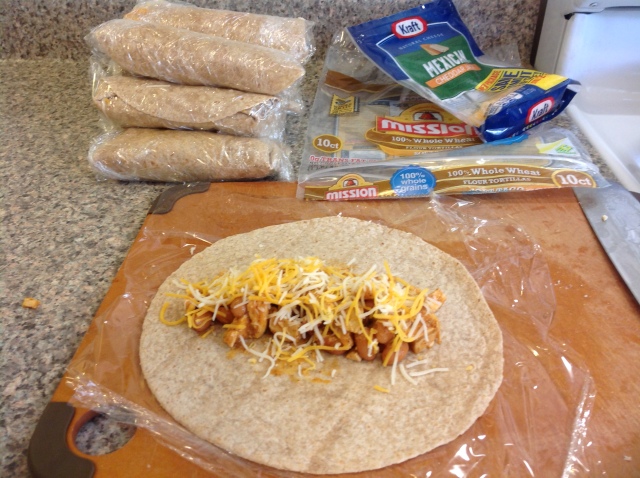When you grow up knowing certain foods from a can or a box, it becomes hard to imagine how easy they might be to make homemade. I’m always surprised when I talk to people who say they made banana bread or blueberry muffins using a box mix, but maybe that’s because, to me, those foods are simple things that my family always made from scratch. Measuring the flour, baking powder, sugar and salt that it took for homemade muffins seemed just as easy as opening a box, (okay, opening a box is pretty easy) and in my mind it tasted much better.
Of course my parents didn’t cook everything from scratch. We had our Sunday Kraft macaroni and cheese tradition, Cincinnati chili and tacos made from a packet mix, and chicken enchiladas with canned enchilada sauce. Having grown up with these foods, I never questioned their authenticity or feasibility as a homemade food. As my culinary skills and recipe collection broadened, I began to learn that many purchased foods I’d had growing up could easily be homemade.
Before we packed up our whole life to move to Seattle, I made us a batch of freezer meals to get us through the days without our skillets, spatulas, pots, and plates. In addition to Meatballs and Baked Chicken Nuggets, I made a batch of Chicken and Bean Enchiladas with a homemade enchilada sauce. This sauce starts like many sauces with a roux, which simply means fat and flour. These two ingredients will be your sauce thickener and as long as they are whisked in gradually and lovingly you will end up with a rich and smooth sauce. Once you get the hang of it, it’s really quite easy. Not as easy as opening a can and pouring it in, but come on now – have a little fun!
Now listen: everyone has different culinary skills and ambitions. You might be just fine with your canned sauce or even your Mexican take-out place, and someone else might insist that everything be homemade with the purest ingredients. Sometimes you just don’t have time to whip up something from scratch and I totally understand. Nonetheless, I find it valuable to at least know, for all those canned and packaged foods you buy, how you could make it yourself. My rule is if you’ve made it at least once before or you know the process of making it, you are allowed to “cheat” every now and then and just buy the pre-made version. I know I’ve done it before. So go ahead now – try making your own enchilada sauce just this once and then you can go back to your canned stuff. Maybe you’ll like it. Maybe you won’t.
Homemade Enchilada Sauce
adapted from TheFresh20
1/4 cup no salt added tomato paste
1 tsp. ground cumin
1 tsp. dried oregano
1 garlic clove, minced or 1/2 tsp. granulated garlic
1/2 tsp. Kosher salt
1/4 tsp. black pepper
3 T. olive or canola oil
1/4 cup whole wheat or all-purpose flour
1-2 T. mild chili powder (depending on spice level desired)
3 1/2 cups – 5 cups chicken broth, warmed*
*Whenever I make chicken enchiladas I start by simmering the chicken in chicken broth. For 3-4 chicken breasts I use 6-8 cups of water with Chicken Better than Bouillon added according to the directions. I bring that to a light boil and immediately reduce to a simmer to cook for 10-15 minutes or until all the breasts are cooked through. I remove the chicken breasts to cool and use the warmed broth to make my sauce. You can also buy canned broth or make your own using a fresh whole chicken with vegetables and seasonings. Make sure the broth is warm when you add it into your sauce as it will be easier to incorporate.
For the sauce: In a small bowl mix tomato paste, cumin, oregano, garlic, salt, and pepper. Stir to combine and set aside.
Heat a large non-stick saute pan over medium heat. Add in oil, flour, and chili powder. Stir to combine until it becomes a thick paste. Add in tomato paste mixture and stir to combine.
Slowly add in hot broth while whisking to dissolve the flour mixture. Make sure to use a non-scratching whisk if you are using a non-stick pan. Continuing whisking while adding broth to your desired thickness. You can always add more if it’s too thick when it finishes.
Reduce heat to a simmer and cook for 5-10 minutes to deepen the flavor. Taste and adjust seasonings as needed – add more broth if it is too spicy or more salt and chili powder if it is too bland.
Use to mix with your cooked chicken and to top your filled tortillas in the pan before baking.

















